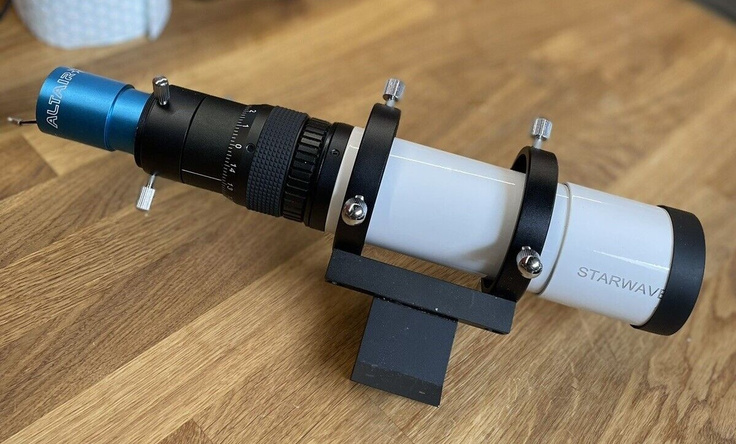A guide camera, also known as a guide cam, is a small camera used in astrophotography to provide guiding corrections to an equatorial mount.
In astrophotography, long exposure times are often used to capture detailed images of celestial objects, such as galaxies or nebulas. However, even small tracking errors in the mount can cause star trailing or other image artifacts that can degrade the quality of the final image.
To address this issue, a guide camera is mounted on a secondary telescope or piggybacked on the primary telescope. The guide camera captures a small section of the sky near the primary imaging telescope’s field of view. The guide camera sends this information to guiding software, which analyzes the star positions and sends correction signals to the mount, allowing for precise tracking.
Guide cameras are typically small, lightweight, and designed to work in low-light conditions. They may also include features such as high sensitivity, high resolution, and rapid readout times to provide accurate guiding corrections. Some guide cameras may also include built-in autoguiding software, simplifying the setup process for the user.
My guide scope and cam are a bundled Altair Starwave. This consists of a 206mm f4 guide scope and a GPCAM ARO130M. This is a mono 1280 x 960 cam based on the well regarded Aptina ARO130 CMOS sensor.
